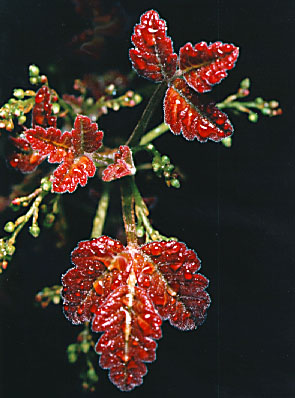Toxicodendron diversilobum
 poison oak
poison oak
Occasional plants, spread by birds, are seen in the inner campus but they are soon removed because many residents are familiar with this easily recognized menace that is frequently encountered in the nearby state parks. The leaves are three-lobed, may resemble blackberry leaves (but there are no spines), and turn red in the fall. Not everyone is affected by touching the leaves, but the oily secretion can make a nasty, red, painful, and long-lived rash. Petting your dog after releasing it in a park is a common source of woe.
Well-established specimens can be found in overgrown areas behind the Mausoleum and the Angel of Grief, and adjacent to the trails through the Academic Preserve (The Dish area). Poison oak thrives at Jasper Ridge Biological Preserve.
Name derivation: Toxicodendron – poison tree; diversilobum – diversely-lobed.
About this Entry: The main text of this entry is from the book Trees of Stanford and Environs, by Ronald Bracewell, published 2005. John Rawlings added the Dish and Jasper Ridge notes.




